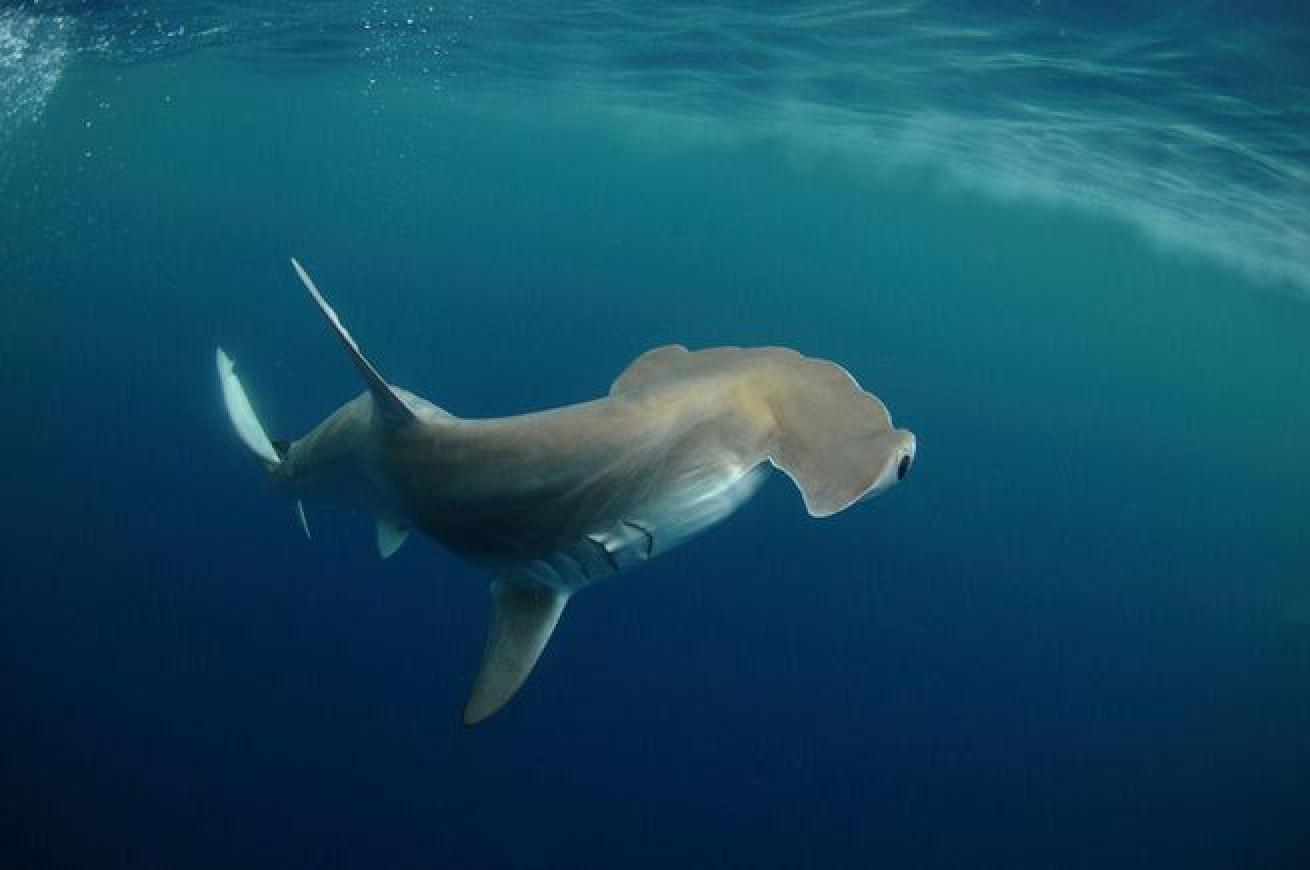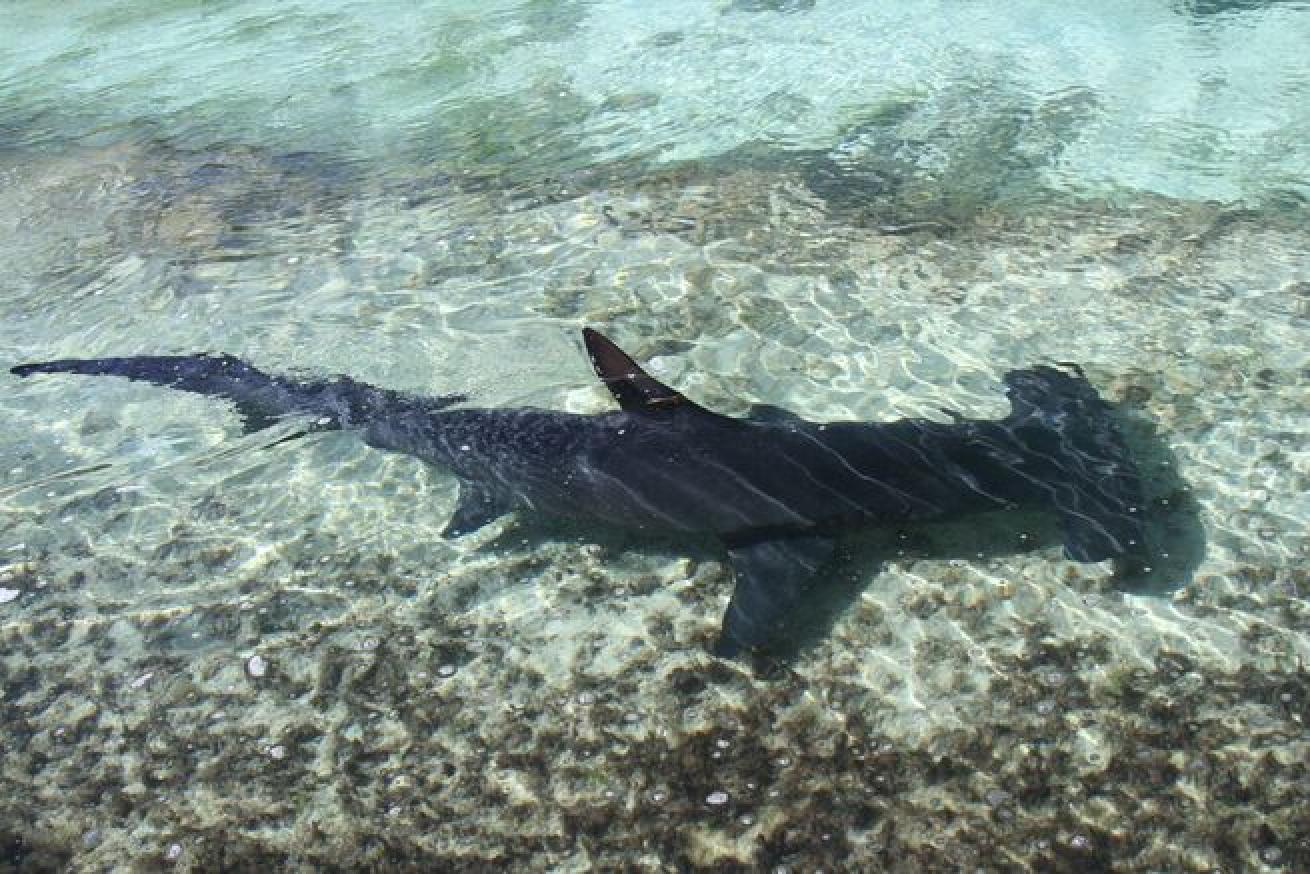7 Things You Didn't Know About Hammerhead Sharks
Hammerhead sharks are known for their unique head shape and wide-set eyes, which give them a better visual range than most other sharks, but there's a lot more to learn about these distinctive fish than what you may already know.

Thinkstock 1 of 7The "hammer" shape of this unique shark's head is called a cephalofoil.
FUN FACT The scientific genus name of most hammerhead sharks is Sphyrna, which comes from the Greek word for hammer. Some scientists have theorized that the hammer-like shape of the head may have evolved to enhance the shark's vision. The hammerhead's eyes are positioned on the sides of the shark's flattened "hammer" head, which gives it 360-degree vision — in other words, the hammerhead can see above and below at all times. However, they have a huge blind spot directly in front of their nose.

Thinkstock 2 of 7Unlike most sharks, hammerheads mostly swim in schools, sometimes numbering in the hundreds in places like Cocos and the Galapagos. At night, a hammerhead shark usually hunts alone.
FUN FACT There are nine species of hammerhead sharks. The great hammerhead is the largest, and typically measures about 13 feet long and weighs about 500 pounds.
Related Reading: Discovering Patagonia's Winged Comb Jelly

ThinkstockA hammerhead scans the sand for its favorite meal, the stingray.
SAD FACT Sharks are infamous for being labeled as the big, bad monsters of the sea, but there's a monster out there that's even more threatening — humans. Hammerheads are at a high risk for extinction because fishermen hunt them for their fins, which are considered a delicacy in some countries. After a hammerhead's fin is sliced off, the fisherman will toss the creature back into the water. Unable to swim, the shark dies.

Thinkstock 4 of 7Hammerheads are found worldwide. They generally prefer warmer waters along coastlines and continental shelves.
FUN FACT Hammerheads are found in both shallow and deep water. During summer, you can find large schools migrating to cooler water. Because they often school in shallow water, they are one of the few animals that can actually tan from exposure to the sun.

ThinkstockA hammerhead's belly is white — this allows it to blend into the ocean when viewed from the bottom and enables it to sneak up on its prey.
FUN FACT Like all sharks, hammerheads have electroreceptory sensory pores called ampullae of Lorenzini. Because of its unique head shape, the hammerhead can sweep the ocean floor for prey more effectively.

ThinkstockHammerheads trap stingrays by pinning them to the seafloor.
FUN FACT Fossil records for most sharks are scant since they do not have mineralized bones. Usually, it is their fossilized teeth alone that are commonly found. According to scientists' DNA studies, the ancestor of the hammerheads probably lived about 20 million years ago.
Related Reading: 7 Liveaboards to Book if You Love to Learn

ThinkstockReproduction occurs only once a year for hammerhead sharks.
FUN FACT A female hammerhead gives birth to live young. A single female can give birth to anywhere from six to 50 pups.
Find out what Project AWARE is doing to shine a light on these creatures.










